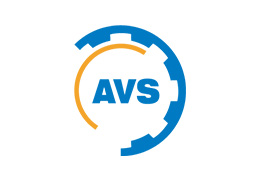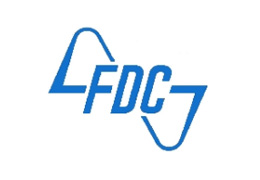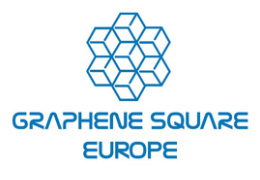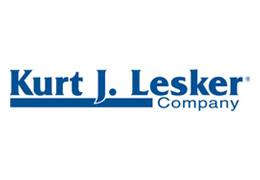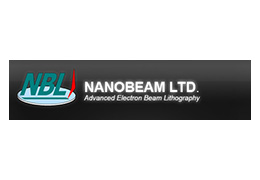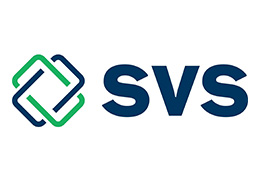Product Introduction
CS2150 Bipotentiostat / Bigalvanostat is the real 2-channel potentiostat. The two channels are totally independent. It can not only support RE, CE, WE 1, WE 2 system, but also supports two independent systems: System 1#: WE 1, RE 1, CE 1
System 2#: WE 2, RE 2, CE 2
When the bipotentiostat has 2 independent channels, you can connect to 2 independent cell systems, and conduct the experiment at the same time in each channel.
This will save your time and make experiment more efficient especially when you have many samples to be tested.
CS2150 equals to two sets of single-channel potentiostat (Model CS150) in one chassis. It brings convenience to the researches and save their time. It is a popular cost-effective product among users.

(1) Electrosynthesis, electrodeposition (electroplating), anodic oxidation, electrolysis
(2) Oxygen reduction reaction (ORR), oxygen evolution reaction (OER), Hydrogen evolution reaction (HER), carbon dioxide reduction.
(3) Energy and materials (Li-ion battery, solar cell, fuel cell, supercapacitor), advanced function materials, and sensor.
(4) Corrosion behavior of metals, and anti-corrosion evaluation
(5) Fast evaluation of inhibitor, water quality stabilizer, coating, and cathodic protection efficiency. Standard supply
Instrument CS2310 x1
CS studio software x1
Power cable x1
Ethernet cable x1
Cell cable x 4
Dummy cell (1kΩ||100µF) x2 After-sales Service (**All the after service is FREE)
1. Warranty period: 5 years.
2. Provide installation guide, manual, software installation video, and training videos.
3. Lifetime free software upgrading of the same model and technical service.
4. Free repair service Typical applications
Rotating ring-disk electrode (RRDE)
Oxidation/reduction reaction (ORR) study: while measuring the polarization curve of disk electrode in the main channel, apply a constant polarization potential on the ring electrode, and thus detect the intermediate products on the disk electrode. RRDE test becomes the typical method for ORR study.

CS2350 Bipotentiostats are combined with H-cells. By measuring current of cathode hydrogen charging (the left cell) and hydrogen atoms anode oxidation (the right cell), it can further calculate the diffusion coefficient of hydrogen atoms in metal and hydrogen flux.

Technical advantages
1. Polarization curve
1. Polarization curve
Tafel plot can be obtained. The user can set the anodic reversal current (passivation film breakdown current) of the cyclic polarization curve to obtain material’s pitting potential and protection potential and uate the its susceptibility to intergranular corrosion. The software uses non-linear fitting to analyze polarization curve, and can make fast evaluation of material’s anti-corrosion ability and inhibitors.
.png)
Polarization curve of Ti-based amorphous alloy & stainless steel in 3%NaCl solution
2. Voltammetry
Linear Sweep Voltammetry(LSV), Cyclic Voltammetry(CV), SCV, SWV, DPV, NPV,ACV, Stripping voltammetry etc. It integrates calculation of peak area, peak current and standard curve analysis.
Linear Sweep Voltammetry(LSV), Cyclic Voltammetry(CV), SCV, SWV, DPV, NPV,ACV, Stripping voltammetry etc. It integrates calculation of peak area, peak current and standard curve analysis.

.jpg)
LSV: mesoporous carbon material in 0.1M KOH CV of PPy supercapacitor in 0.5 mol/L H2SO4
3. Electrochemical Noise
With high-resistance follower and zero-resistance ammeter, it measures the natural potential/current fluctuations in corrosion system. It can be used to study pitting corrosion, galvanic corrosion, crevice corrosion, and stress corrosion cracking etc. Based on calculation of noise resistance and pitting index, it can complete localized corrosion monitoring.
With high-resistance follower and zero-resistance ammeter, it measures the natural potential/current fluctuations in corrosion system. It can be used to study pitting corrosion, galvanic corrosion, crevice corrosion, and stress corrosion cracking etc. Based on calculation of noise resistance and pitting index, it can complete localized corrosion monitoring.

4. Full floating measurement
Full-floating mode be used for autoclave electrochemical measurements, on-line corrosion monitoring of metallic components under the ground (rebar in concrete, etc.) 5. Software development kit (SDK)
We are able to provide API functions and development examples, which facilitates some users’ requirements for secondary development and self-defined measurements. We can provide .dll file. Software Features
Cyclic voltammetry:
CS studio software provides users a versatile smoothing/differential/ integration kit, which can complete the calculation of peak height, peak area and peak potential of CV curves. In CV technique, during the data analysis, there is function of selecting exact cycle(s) to show. You can choose to see a cycle or some cycles as you want. You can also export data or vector graph of an exact cycle or several cycles.
Full-floating mode be used for autoclave electrochemical measurements, on-line corrosion monitoring of metallic components under the ground (rebar in concrete, etc.) 5. Software development kit (SDK)
We are able to provide API functions and development examples, which facilitates some users’ requirements for secondary development and self-defined measurements. We can provide .dll file. Software Features
Cyclic voltammetry:
CS studio software provides users a versatile smoothing/differential/ integration kit, which can complete the calculation of peak height, peak area and peak potential of CV curves. In CV technique, during the data analysis, there is function of selecting exact cycle(s) to show. You can choose to see a cycle or some cycles as you want. You can also export data or vector graph of an exact cycle or several cycles.
.png)
Tafel plot and corrosion rate:
CS studio also provides powerful non-linear fitting on Butler-Volmer equation of polarization curve. It can calculate Tafel slope, corrosion current density, limitation current, polarization resistance, corrosion rate. It can also calculate the power spectrum density, noise resistance and noise spectrum resistance based on the electrochemical noise measurements.
CS studio also provides powerful non-linear fitting on Butler-Volmer equation of polarization curve. It can calculate Tafel slope, corrosion current density, limitation current, polarization resistance, corrosion rate. It can also calculate the power spectrum density, noise resistance and noise spectrum resistance based on the electrochemical noise measurements.

Battery Test and analysis:
charge & discharge efficiency, capacity, specific capacitance, charge & discharge energy.
charge & discharge efficiency, capacity, specific capacitance, charge & discharge energy.

Real time saving of data: The data can be automatically saved even in case of sudden power off.
Combination test: it can facilitate the automation of experiments and save time. With the unique function of combination test, you can choose several techniques, and set the wait time, the start time, and the cycles. Choose the experiments you want to run. Then you can make auto measurement of the set experiments as you want without having to wait in the lab. This function is especially useful if you have multi experiments to run and save your time greatly.

Data open: You can open the data files by txt format in notepad. Data can also be opened in Origin
Specifications
| Specifications | |
| Support 2-, 3- or 4-electrode system | Interface: Ethernet |
| Potential control range: Primary Channel: ±10V second Channel: ±10V | Current control range: ±2A |
| Potential control accuracy: 0.1%×full range±1mV | Current control accuracy: 0.1%×full range |
| Potential resolution: 10μV (>100Hz), 3μV (<10Hz) | Current sensitivity:1pA |
| Rise time: <1μS (<10mA), <10μS (<2A) | Reference electrode input impedance:1012Ω||20pF |
| Current range: 2nA~2A, 10 ranges | Compliance voltage: ±21V |
| Maximum current output: ±2A | CV and LSV scan rate: 0.001mV~10,000V/s |
| CA and CC pulse width: 0.0001~65,000s | Current increment during scan: 1mA@1A/ms> |
| Potential increment during scan: 0.076mV@1V/ms> | SWV frequency: 0.001~100 kHz |
| DPV and NPV pulse width: 0.0001~1000s | AD data acquisition:16bit@1 MHz,20bit@1 kHz |
| DA Resolution:16bit, setup time:1μs | Minimum potential increment in CV: 0.075mV |
| IMP frequency: 10μHz~1MHz | Low-pass filters: Covering 8-decade |
| Potential and current range: Automatic | Weight / Measurements: 8kg,36.5 x 30.5 x16cm |
| Operating System: Windows 2000/NT/XP/ win7/win8/win10 | |
Techniques
Stable polarization - Open Circuit Potential (OCP)
- Potentiostatic (I-T curve)
- Galvanostatic
- Potentiodynamic (Tafel plot)
- Galvanodynamic (DGP)
- Multi Potential Steps
- Multi Current Steps
- Potential Stair-Step (VSTEP)
- Galvanic Stair-Step (ISTEP)
- Chronopotentiometry (CP)
- Chronoamperametry (CA)
- Chronocaulometry (CC)
- Linear Sweep Voltammetry (LSV)
- Cylic Voltammetry (CV)
- Cyclic polarization curve (CPP)
- Linear polarization curve (LPR)
- Electrochemical Potentiokinetic Reactivation (EPR)
- Electrochemical Noise (EN)
- Zero resistance Ammeter (ZRA)
- Battery Charge and Discharge
- Galvanostatic Charge and Discharge (GCD)
- Potentiostatic Charging and Discharging
- Potentiostatic Intermittent Titration Technique
- Galvanostatic Intermittent Titration Technique
- Data Logger
- Electrochemical Stripping/ Deposition
- Bulk Eletrolysis with Coulometry (BE)
- Rs Measurement



